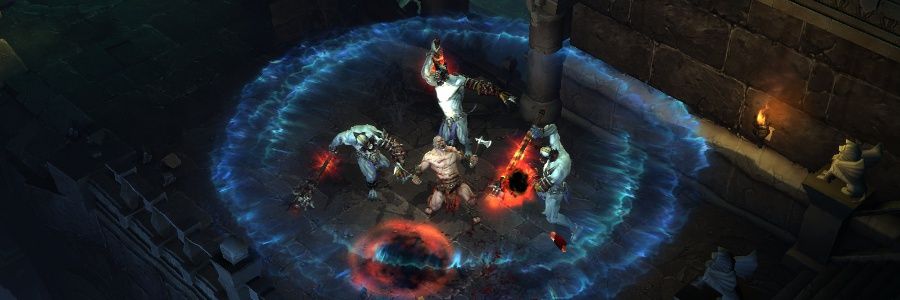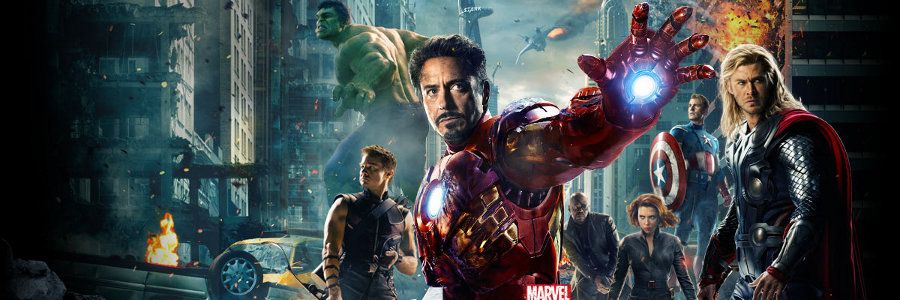
It's another gray, dreary Monday in late autumn. The leaves are dead on the ground, frost is on your window and its dark when you leave for work and dark when you return. There's only one thing that can perk you up on a day like this: reading a vintage comic. And since you may not be able to drag your collection with you down to the office, we've taken the time to help you out by reading the comics for you and reporting what we see in this, another edition of... Tales From the Vault!
Today's offering: Amazing Adventures #10, featuring Black Bolt and the Inhumans. So what are we waiting for/ Let's get right to it!
 Details:
Details: January of 1972 brings us this timeless epic from Gerry Conway with art from Mike Sekowsky and Frank Giacoia. What a perfect creative team this is. For, you know, a 1963 issue of
Justice League of America. Sorry, I should wait to actually read the issue before trashing it I guess.
Synopsis: Well, I’m not really sure why this comic is in my possession, but since it is I might as well do something with it. The issue begins right in the middle of the action, no doubt continued from last issue: Magneto has defeated the Inhumans and captured the royal family. Execute them, Magneto!!! But, I guess not. No, Magneto has other plans: he uses some sort of machine to turn one of his minions into a giant ape monster with a huge brain, and then the monster uses its newly developed psychic powers to mentally control Black Bolt.
Well, sure. Why the hell not.
With Black Bolt now enslaved, Magneto scoops him up and flies to... San Francisco. Must be a Big Brother and the Holding Company show they need to get to fast. While this is going on, the rest of the royal family (minus the only cool character in the entire group, Triton) remain behind and mope around in their cage, lamenting their total lack of personalities. Medusa, though, has a cunning plan. Or so she says.

We cut away from this engrossing scene to a subplot where a supporting character from previous issues, a human, gets sucked into space by something called the Trikon. This seems to be setting up a future storyline, but since this is the last issue... hmm (more on this later).
Meanwhile, Magneto has apparently decided to skip San Fran and has instead gone to an underground base in Washington state, where he and his minions (who, by the way, are all twisted little monster people -- mutates, apparently, that he altered with his weird machine) attack in order to get "a new source of cosmic energy". Black Bolt uses his shouts to knock out the defenses, then twists a dial and voila, Magneto has "the power of the UNIVERSE". And that’s the end of Marvel.
Or, no, wait. No it isn’t. Back with the others, Medusa has sprung her cunning plan, though what exactly it entailed I don't know, because by the time they go back to her, she's basically gotten the guard wrapped up in her hair. I guess she used her feminine wiles to distract the guard while her hair went to town. Sound like a crappy plan, but, okay. It works, of course, and they free themselves, then start fighting the guards. They defeat them just in time to see Magneto's plane returning, so they hide in ambush.
Magneto, though, sees them in waiting and he orders Black Bolt to strike. Bolt does so -- by punching Magneto in the head. Wait, what? Doesn't Magneto have a personal magnetic force field? In fact, isn't he wearing a metal helmet that would pretty much protect him from some guy just punching him? Yet for some reason the plane crashes and we get the explanation that Black Bolt was faking all along because he didn't want to risk the safety of his family, but since they are free, he can attack.

"You pretended you were what you weren't -- just as you pretended to destroy those government men" and just as this plot pretended to make sense. Black Bolt didn't pretend to destroy those government men at the mountain base -- he did. He smashed the whole place and trashed all the guards and allowed Magneto to get the power source. None of that was pretense. The fact that he did all this on purpose while “pretending” to be in Magneto’s thrall actually makes it worse than if he really had been in Magneto’s thrall. Seriously, rationalize much, bro?
Anyway, Magneto's apeman attacks, and Black Bolt zaps him with a word. Magento tries to run off with his power supply, but Karnak clocks him with a couple karate moves and knocks him out. Not once does Magneto even attempt to use any of his magnetic powers. In fact, in this entire issue, the only thing he's done with them is levitate his plane, and I'm not entirely sure he was doing that either, it might just have been a regular plane. So much for having the power of the Universe; he apparently didn’t even have the power of Magneto.
Um. Yeah, so Black Bolt is still fighting the ape monster for some reason, and again he says something and blows up the room. Karnak goes to town on Magento's machine, wrecking it, but Magneto still can escape by... running out the door. Again, no powers. But his energy source suddenly blows up for no apparent reason, obliterating the room.
And then... that's it. Magneto is mysteriously gone and the royal family gathers themselves up to head back to Inhumanland so Black Bolt can regain the throne from Maximus. And that story... is in
Avengers #95. Oh yeah, that's why I bought these issues. I had blissfully forgotten.
THE END!
 Extras:
Extras: On the list of other details about this issue I had forgotten: just how absolutely terrible the story is. Holy cow. The rest of this issue is a reprint of the origin of the Inhumans. I'm not sure where it's from, but any material from Stan and Jack should be ashamed to appear in the same magazine as this crap. In fairness, though, I should say that this was pretty early in Conway's career -- he was only 19 when this was published -- and he went on to much better things. He's admitted in interviews that he often wasn't sure what he was doing on some of these early efforts, and it shows here; I'm literally not sure he knew what Magneto's powers were, based on the story. Of course, I guess it's possible Magneto really didn't have powers during this story, but it's not mentioned anywhere and I'm pretty sure he has powers when he appears next in
Avengers #110. So... yeah.
That dangling plotline about the Trikon, by the way, was left dangling for almost 20 years before a mini-series and a
Quasar story in 1991 finally revealed what happened. I'm guessing that Mark Gruenwald was about the only person on Earth who cared, based on how awful this issue was, but that’s what made Gru so awesome.
It's interesting to note how successful/unsuccessful this series was. Black Widow was dumped after #8, however that same month she began co-starring in
Daredevil, getting her name in the logo and everything, where she lasted for... I dunno, like 25 issues. The Inhumans, meanwhile, got their own series which lasted all of two issues before they were put on ice for the duration.
Bullpen Bulletins, in fact, announces this issue that they are turning the book over to the Inhumans, which is a little odd considering the lettercolumn and the story itself both tell the reader that the series is canceled, continued in
Avengers and being replaced next issue. Another interesting note in BB is that
Iron Man has "returned to a bi-monthly schedule" and that "rumors of its cancellation were greatly exaggerated". I hadn't heard that
Iron Man was in danger of being canceled at this time, but it doesn't surprise me; the storyline in those issues (#45 came out at the same time as this) are some of the crappiest things I've ever read, and I’m a guy who just read
Amazing Adventures #10, so I know my crappy.
The BB also mentions that they had planned (and announced) a price increase from 15 cents to 25 cents, with the issues being double sized, but changed their minds due to unexpected changes in the financial situation. Yeah, they realized that DC was doing the same thing and that they could crush them by dropping the price to 20 cents. Hence there was only one month when all the Marvel books were double sized 25 cent issues -- the November, 1971 issue, which also featured the first frame cover design, all of which was in celebration of Marvel's 10th anniversary. And sure enough, Marvel's 20 cent books ran roughshod over DC's 25 cent comics in one of the biggest missteps in DC's long publishing history.
My grade: B+ for the Gil Kane frame cover with the cool Black Bolt logo,
D- for being one of the worst Marvels of the era and the single lamest Magneto appearance ever. Sorry, Gerry!
 Today we in America celebrate Veterans Day and honor the men and women who serve and have served in our armed forces. For most of the rest of the world, this is also Armistice Day, which commemorates the end of World War I at 11:11 AM on 11/11, 1918. In honor of our veterans, then, we at The Vault thought it would be appropriate to take a look at some of the many fine war comics that have graced shelves over the years. So without further ado, here's our list of the Top Ten Sgt. Fury Covers of all time.
Today we in America celebrate Veterans Day and honor the men and women who serve and have served in our armed forces. For most of the rest of the world, this is also Armistice Day, which commemorates the end of World War I at 11:11 AM on 11/11, 1918. In honor of our veterans, then, we at The Vault thought it would be appropriate to take a look at some of the many fine war comics that have graced shelves over the years. So without further ado, here's our list of the Top Ten Sgt. Fury Covers of all time.  10) Sgt. Fury #50
10) Sgt. Fury #50 9) Sgt. Fury #9
9) Sgt. Fury #9 8) Sgt. Fury #100
8) Sgt. Fury #100 7) Sgt. Fury #24
7) Sgt. Fury #24 6) Sgt. Fury #96
6) Sgt. Fury #96 5) Sgt. Fury #74
5) Sgt. Fury #74 4) Sgt. Fury #38
4) Sgt. Fury #38 3) Sgt. Fury #16
3) Sgt. Fury #16 2) Sgt. Fury #13
2) Sgt. Fury #13 1) Sgt. Fury #67
1) Sgt. Fury #67



















































